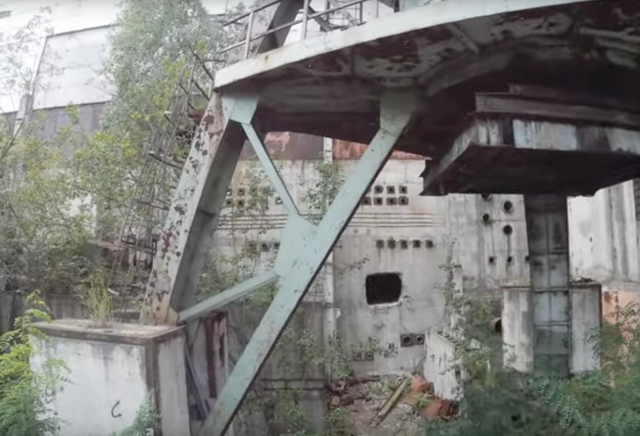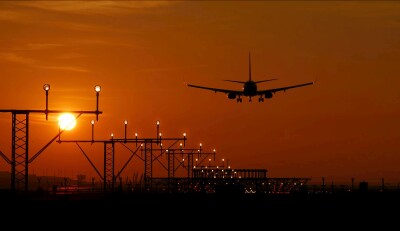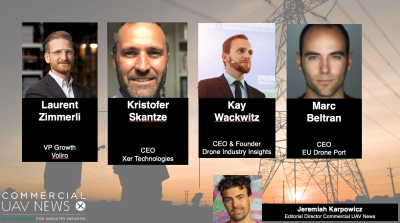We've detailed what it means to conduct underground surveys and inspections with drones as well as how the technology can be used to safely monitor and inspect inaccessible places. These efficiencies are being enabled by tools like the Elios 2 from Flyability, which has created new standards around inspecting, monitoring and exploring confined places. The distinctive spherical cage of the Elios 2 allows it to remain stable while capturing essential information in places that are dangerous or otherwise inaccessible.
A recent case study highlighted the kind of difference such tools can make in those exact types of situations, as the Elios 2 was used for an inspection in Reactor Five at the Chernobyl Nuclear Power Plant. The Elios 2 drone provided stakeholders with their clearest view of many aspects of the facility for the first time since the 1986 disaster. They were able to collect enough visual data to determine that nuclear waste was not present anywhere in the inspection area.
The utility that the case study highlights is specific to nuclear power plants, but the value it showcases can be applied in various other sectors, at various types of facilities. These details are critical to understand in order to ascertain how drone innovations can be used by countless others to create similar efficiencies.
Saving Time, Reducing Cost and Increasing Safety
While the differences that the Elios 2 made at Chernobyl were stark, the technology has already been used at other major nuclear power plants. The differences drones can make in terms of reduced inspection time, decreases in cost and keeping people out of harm's way have been quantified in plain detail. The bottom line savings are significant, which were estimated to be nearly $500,000 on account of power plants being able to continue to operate at full output rather than have to be shut down for inspection purposes.
Big power plants in the United States will lose hundreds of thousands of dollars every time they’re shut down for routine maintenance and inspections. The challenges with doing so can go beyond the bottom line because they’ll sometimes require permits or even the installation of temporary scaffolding. By flying a drone, which can get in and out of some areas in minutes, such challenges are avoided while keeping inspectors out of harm’s way.
“If you’re looking at the numbers, you will see the distinctions very easily,” said Charles Rey, Training Manager at Flyability. “Most of the time, this is money that’s already in the budget, so those are dollars that then stay in your budget. It’s can be a challenge to figure out how to quantify an additional expense that never happens, but we know what the costs are for these types of shutdowns, so avoiding them is something we can easily measure.”
Traditional inspection methods can be dangerous on multiple levels, especially in nuclear power plants. For many, the normal way to perform a routine inspection or maintenance is to send a human with the proper safety protection along with a Geiger counter into a given location. However, drones have created a much better option.
"When one of our power plant customers realized they had a leak which they couldn’t precisely detect, they decided that rather than send someone in with the protective gear and Geiger counter, they’d fly the drone around with the thermal camera activated,” Rey told Commercial UAV News. “That allowed them to see exactly where the leak was without exposing anyone. They knew exactly which piece needed to be replaced, so they could send it one person with the right equipment to do it very quickly. That’s important in these situations where you don't want to be in there a minute more than necessary.”
These lessons and applications were especially evident at the Chernobyl Nuclear Power Plant, where the Chernobyl decommissioning team leveraged drone technology to capture a whole new understanding of the facility while keeping their team safer than ever.
Drones at the Chernobyl Nuclear Power Plant
The Flyability team was contacted by one of their resellers in Ukraine that wanted to demonstrate the capabilities of the Elios 2 to the Chernobyl decommissioning team. That led to questions and logistics around permissions and permits, but once all of that was sorted out, Rey took the lead to showcase what the drone could do. Those capabilities proved to be significant in light of the decommissioning team’s traditional approach to keeping track of what was happening in Reactor 5.
“The previous way was to send in someone with a flashlight, but they would not be able to climb anything and their vantage was obviously very limited,” Rey explained. “The place is in really bad condition, with stairs missing and ladders that have collapsed because of rust. That’s just part of the reason no evidence of those holding pools had ever really been gathered until now.”
The data captured by the drone completely changed the decommissioning team’s perspective. While they used that information to make the determination that the pools were empty and there was no nuclear waste present anywhere inside, the additional perspective allowed them to see the facility in ways that are defining new plans related to other inspections.
The challenges in these types of environments are varied, but one of the biggest is related to the management of the signal. Additionally, users are sometimes worried about damaging the drone when operating in a place where the drone can easily knock up against a piece of equipment. These are the sorts of details that Rey worked through with the decommissioning team in a training process that only took a day.
“The possibilities of flying indoor and being able to capture essential information in confined spaces is something people sometimes need to see in order to understand the possibilities, but once they do, they quickly understand how easy and powerful the solution can be,” Rey said. “They can see for themselves that if they hit the wall, or lose the signal, the drone is fine. Once they saw we didn’t have to worry about those kinds of details, we were able to quickly capture some really powerful assets that were based on the blueprints that showed us exactly what they wanted to document.”
The speed of the technology on every level was striking to the decommissioning team, both in terms of how fast the training process went, how fast they were able to capture essential information, and how quickly they were considering other options with the drone. Those kinds of options are the types that could be utilized in other power plant inspections, but they can also be applied in various facilities and sectors.
Lessons in Energy and Beyond
Flyability drones are used in a variety of sectors, which range from energy to mining to oil & gas. They’ve defined efficiencies that are ultimately driven by providing operators and organizations with solutions that can make a given task or project more efficient. Exactly what those efficiencies look like can vary a great deal from one project or in one sector to another, which is why Rey recommends potential users understand what specific value they’re trying to create before moving forward with adoption.
“Try to think about what your use case is, and for what you want to use it, because it's important to know that the Elios is a tool,” Rey mentioned. “A drone can’t do everything, but it can bring a huge value if you have the right use case and the right needs. What kind of inspection do you want to do?’ What is the frequency of those inspections? With those answers, you can use a drone to create real value.”
As an example of how that value can be enabled, for an organization that currently conducts inspections on a quarterly basis, what kind of a difference would capturing that information on a monthly basis represent? How much better will information captured via a tool like a drone be when compared to traditional capture methods?
“In certain instances, people aren’t performing inspections at the rate they’d prefer, because they can’t afford to shut down their facilities to do that work,” Rey continued. “In some chemical plants, it takes a human a full day to clean a tank, but the information needed to determine if that’s necessary to do so or not can be captured in 10 minutes. This technology has the potential to increase your inspection for a very low cost compared to having to shut down your facility for a couple of days.”
In active nuclear power plants, these efficiencies can keep people safe while simultaneously redefining maintenance costs in a positive manner. In places like the Chernobyl Nuclear Power Plant, such distinctions are allowing stakeholders to see similar bottom line benefits while also securing the safety of the teams and people across the entire region.















Comments